If you’ve ever updated a theme, installed a new plugin, or made changes to your WordPress site’s code, you might have been greeted with a dreaded message: Parse error: syntax error, unexpected….
I know how frustrating this can feel; it’s like your site suddenly decided to speak a language you don’t understand.
The good news is, this error isn’t as mysterious as it looks.
In most cases, it’s simply WordPress telling you there’s a small mistake in the code that needs fixing.
In this post, I’ll walk you through exactly what this error means, why it happens, and the steps you can take to fix it so your site is back up and running in no time.
Table Of Contents
1 What is the “Parse Error: Syntax Error, Unexpected” Error in WordPress?
The “Parse Error: Syntax Error, Unexpected” message in WordPress usually pops up when there’s something in your PHP code that doesn’t follow the rules. Since WordPress runs on PHP, every theme and plugin relies on clean, well-structured code to work properly.

If you (or a theme/plugin) write something that PHP doesn’t understand, maybe a missing semicolon, a wrong function name, or an extra bracket, WordPress stops in its tracks and shows this error instead of loading your site.
Think of it like speaking to someone in a language they know, but mixing up the grammar so badly they can’t figure out what you mean. That’s what a syntax error is: the code’s grammar isn’t quite right. The unexpected part means the PHP interpreter ran into something it didn’t expect at that exact spot in the code.
Here are a few ways you might see it:
syntax error, unexpected end of file(code ended too soon)syntax error, unexpected token(a wrong symbol or keyword)syntax error, unexpected variable(a misplaced variable)syntax error, unexpected identifier(a wrong or misplaced name)
When this happens, WordPress can’t process the page at all, which is why your site might look completely broken.
But don’t worry, once you know what’s causing the problem, fixing it is usually quick and straightforward. Let’s go through how to do that.
2 Common Causes of the “Parse Error: Syntax Error, Unexpected” in WordPress
A Parse Error doesn’t just appear out of nowhere; it’s almost always caused by a small mistake in your site’s code. Here are some of the most common causes you might run into:
- Unclosed quotes or brackets – Forgetting to close
"or}can confuse PHP and break your site. - Missing characters – Skipping a semicolon
;, quotation mark", or parenthesis)can stop WordPress from reading your code correctly. - Incorrect syntax – Using the wrong keyword or putting a statement in the wrong place can trigger the error.
- Incompatible code – Code written for an older PHP version might not work on your current setup.
- Corrupted or modified files – Accidentally editing a core, theme, or plugin file can introduce errors.
I often see this happen when editing code directly inside WordPress’s Theme or Plugin File Editor.
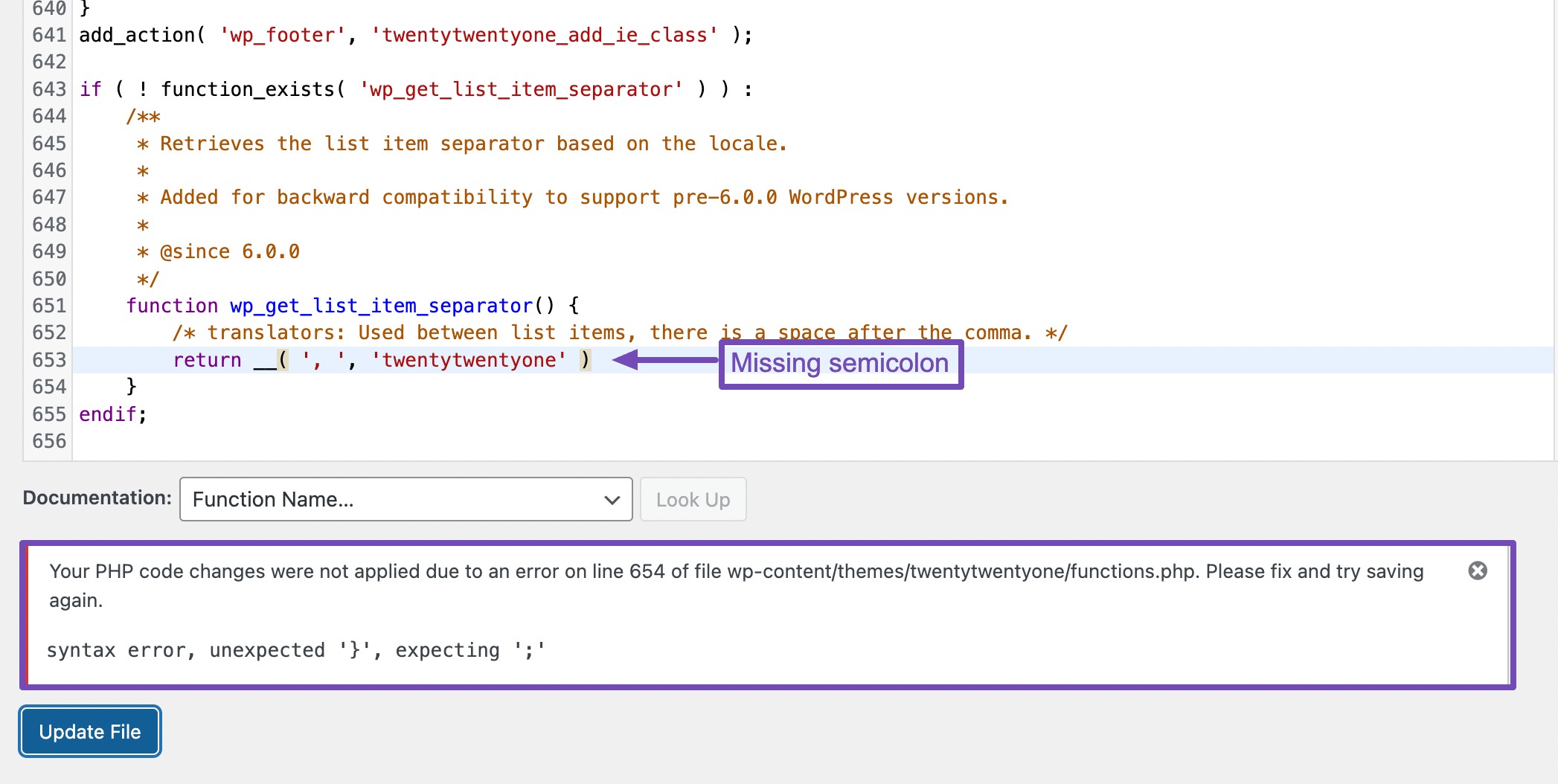
For example, as shown above, if you forget a semicolon at the end of a line, WordPress will immediately throw a parse error. Adding that semicolon fixes it right away.
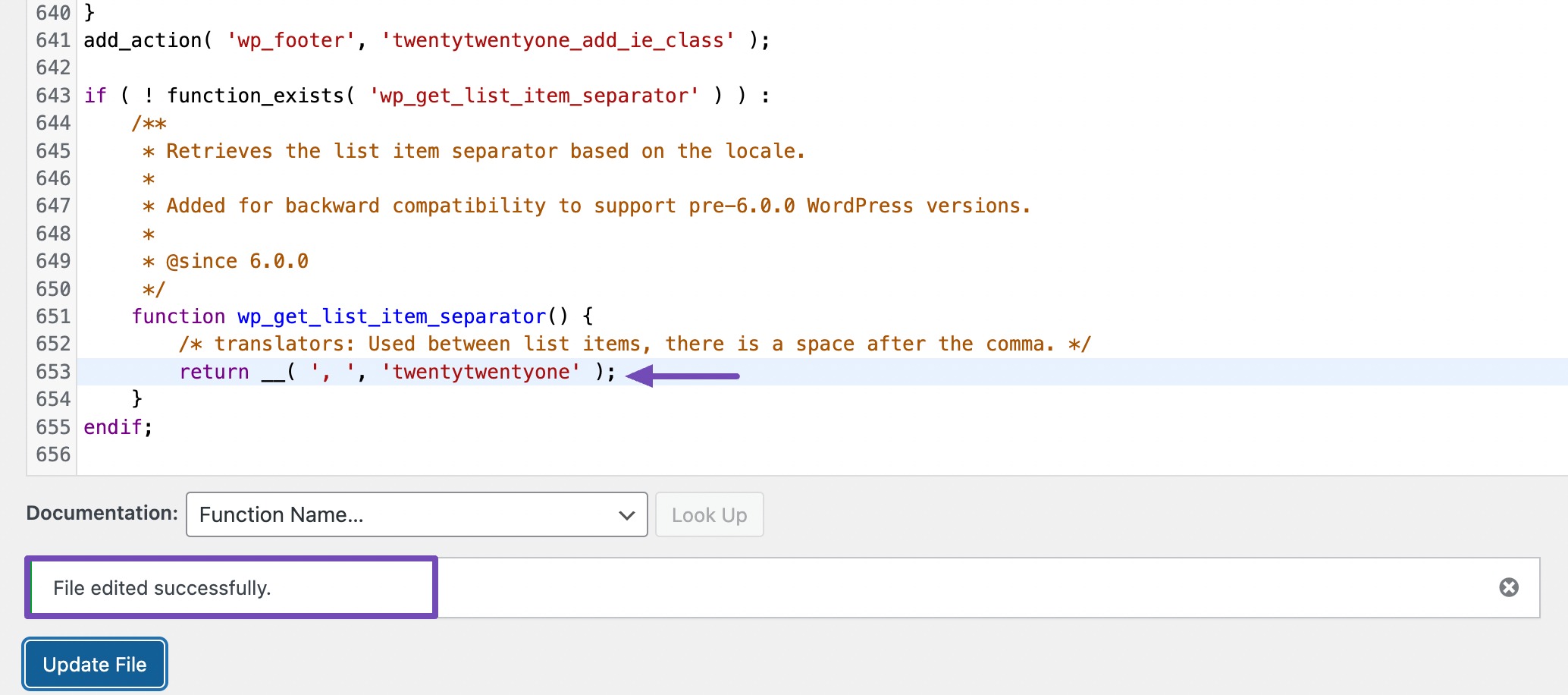
Similarly, if you encounter an “unclosed” error followed by a specific character and line number, check the code for missing curly braces. In the example below, the matching closing brace was missing.
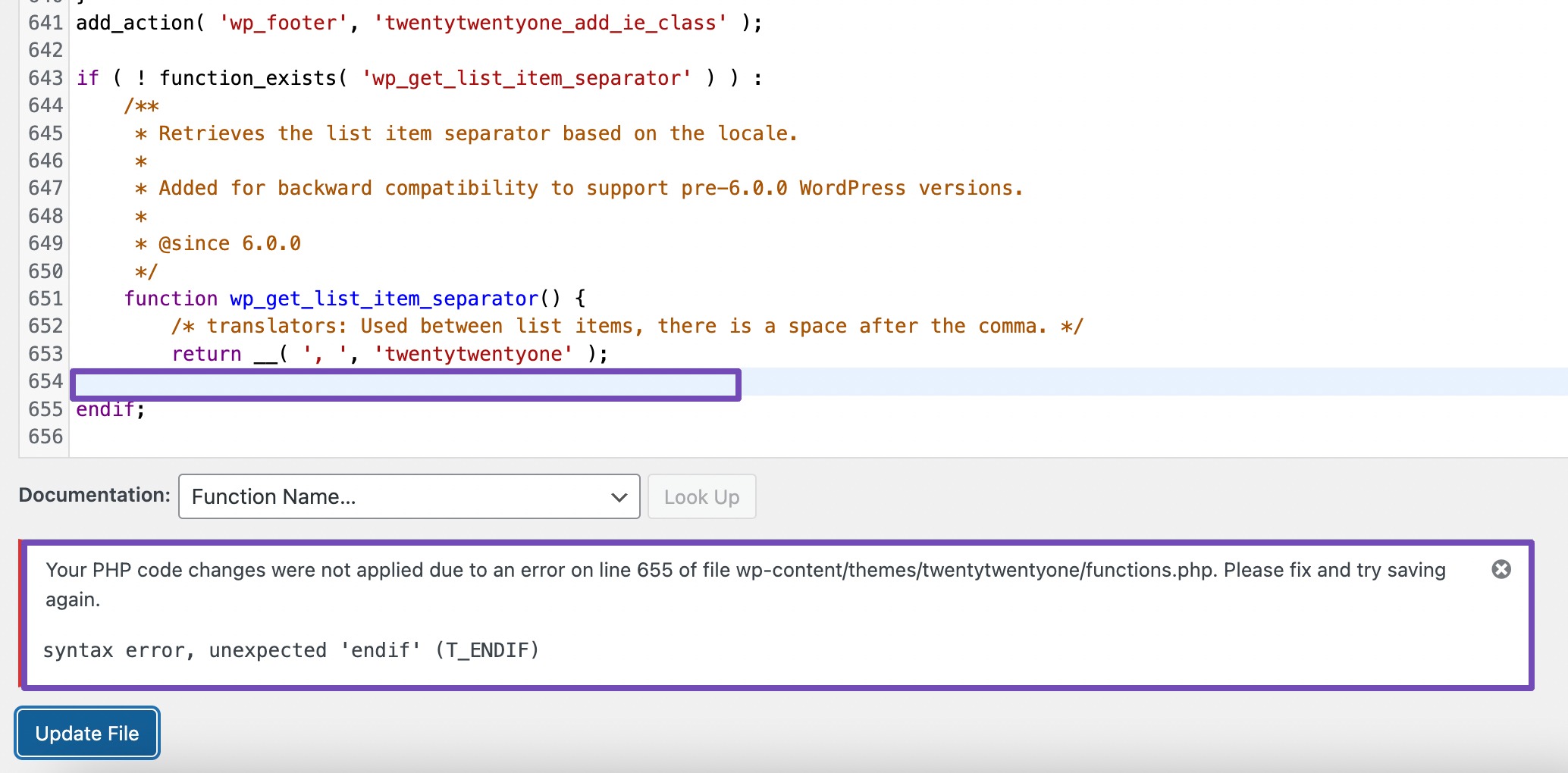
Note: To fix errors while you are editing code in the WordPress File Editor, simply click anywhere in the file, use “Ctrl + Z” (Windows) or “Command + Z” (Mac) to undo recent changes, and hit “Update File.”
If the code still isn’t valid, WordPress won’t save it, so you can simply refresh the page to get back to the last working version.
Parse errors are usually simple to fix once you spot the mistake. But if you’re not comfortable editing code, don’t worry, I’ll also show you an easier alternative that doesn’t require touching a single line.
3 How to Fix the “Parse Error: Syntax Error, Unexpected” in WordPress
Most times, when this Parse error officially happens, it might surely lock you out of your WordPress dashboard.
But if it didn’t lock you out from your WordPress dashboard, you can try to restore the previous backup of your website.
Alternatively, if you recently made changes to the code, please review the changes you made. The error may be caused by a mistake you made in the code.
While carefully reviewing the code, look for missing or mismatched parentheses or brackets or perhaps some semicolons in the PHP.
You can also download the code and paste it into any PHP syntax checkers or editors to determine where the error occurs.
If you cannot do any of these, or if they do not work, proceed to the steps below to resolve this error quickly.
3.1 Enable Debug Mode
WP Debug mode is a diagnostic tool that helps you identify and debug errors in your WordPress site.
Normally, when WordPress locks you out of your admin dashboard, you will see a blank page with a message similar to this:

With this message, you won’t be able to determine the actual cause of this “critical error” because several issues might trigger this message in WordPress.
When the WP debug mode is enabled, it will display the PHP error message, the cause, and a direction to where the error is coming from.
You can enable debugging through your cPanel or a WordPress plugin. If you can log in to your WordPress dashboard, you can use a plugin to enable debug mode.
But for now, we will be using the hosting or cPanel method. So log in to your cPanel or DirectAdmin.
So, select File Manager and navigate to public_html on the resulting page.
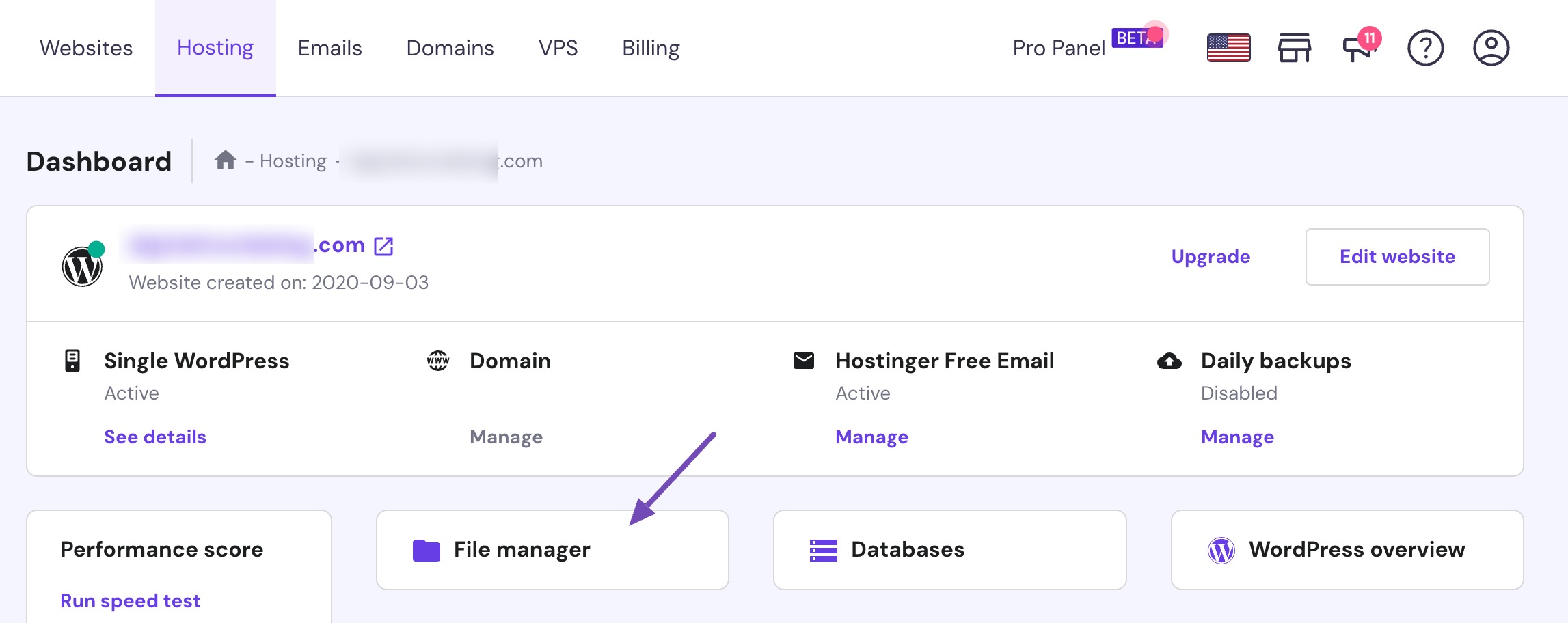
Next, scroll down and look for the wp-config.php file.
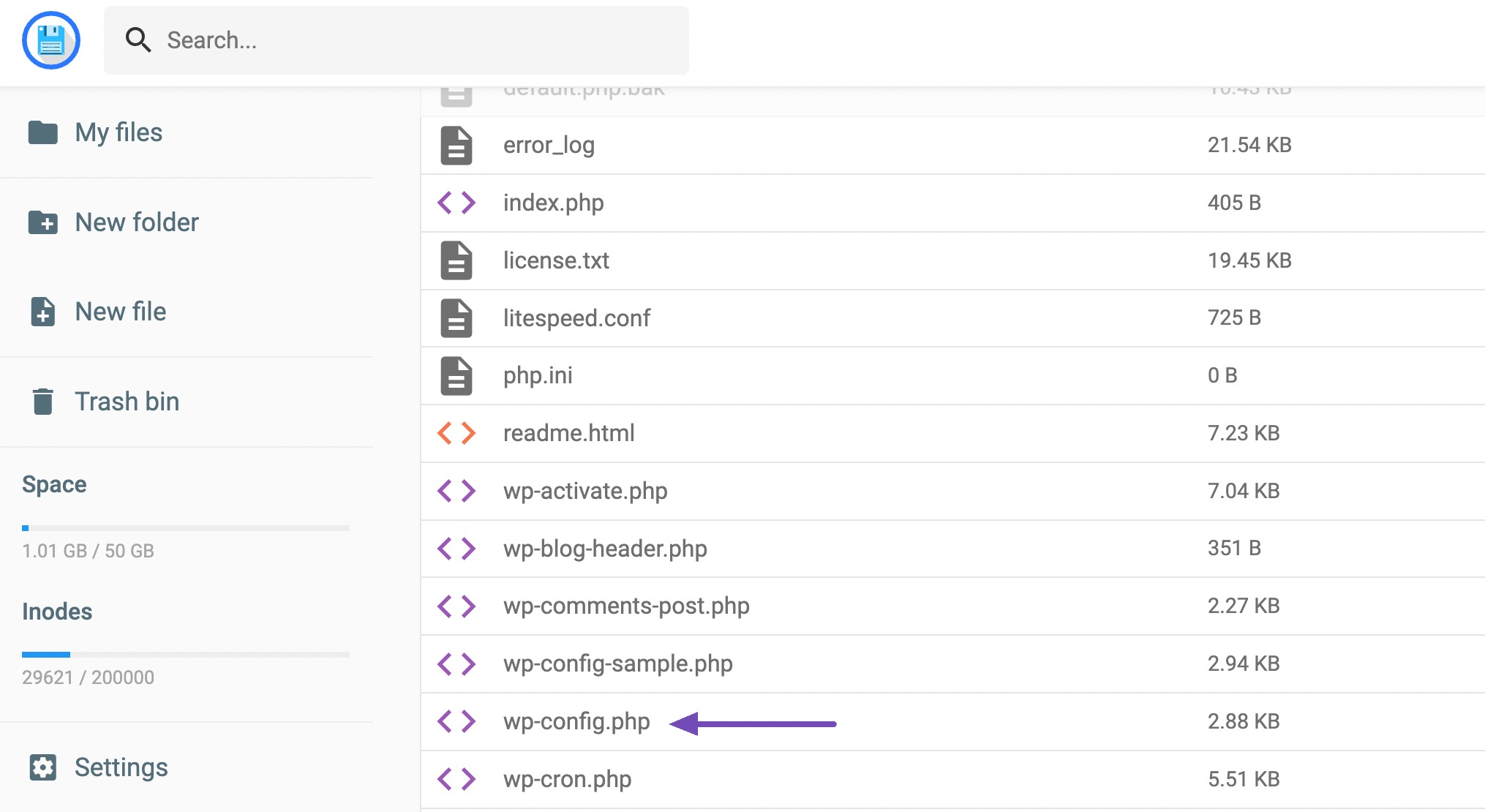
When you see it, hover over it, right-click, and then select Edit.

After clicking Edit, you will be redirected to the page where you can enable debug mode. Scroll down to the bottom.
Look closely before the “ /* That’s all, stop editing! Happy publishing. */” section. You should see “define( ‘WP_DEBUG’, false );” as shown below.
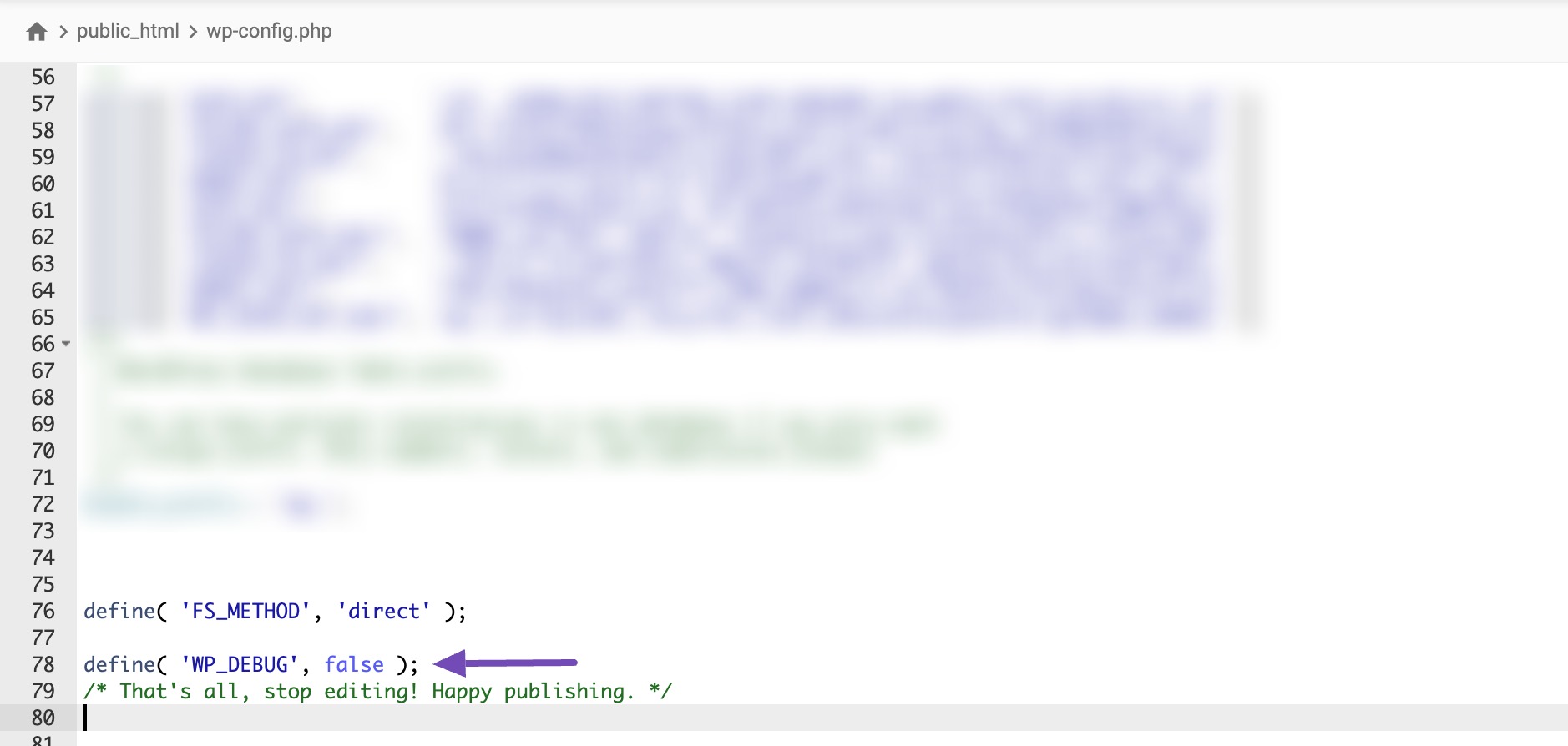
Please replace false with true and save your changes, as shown below.
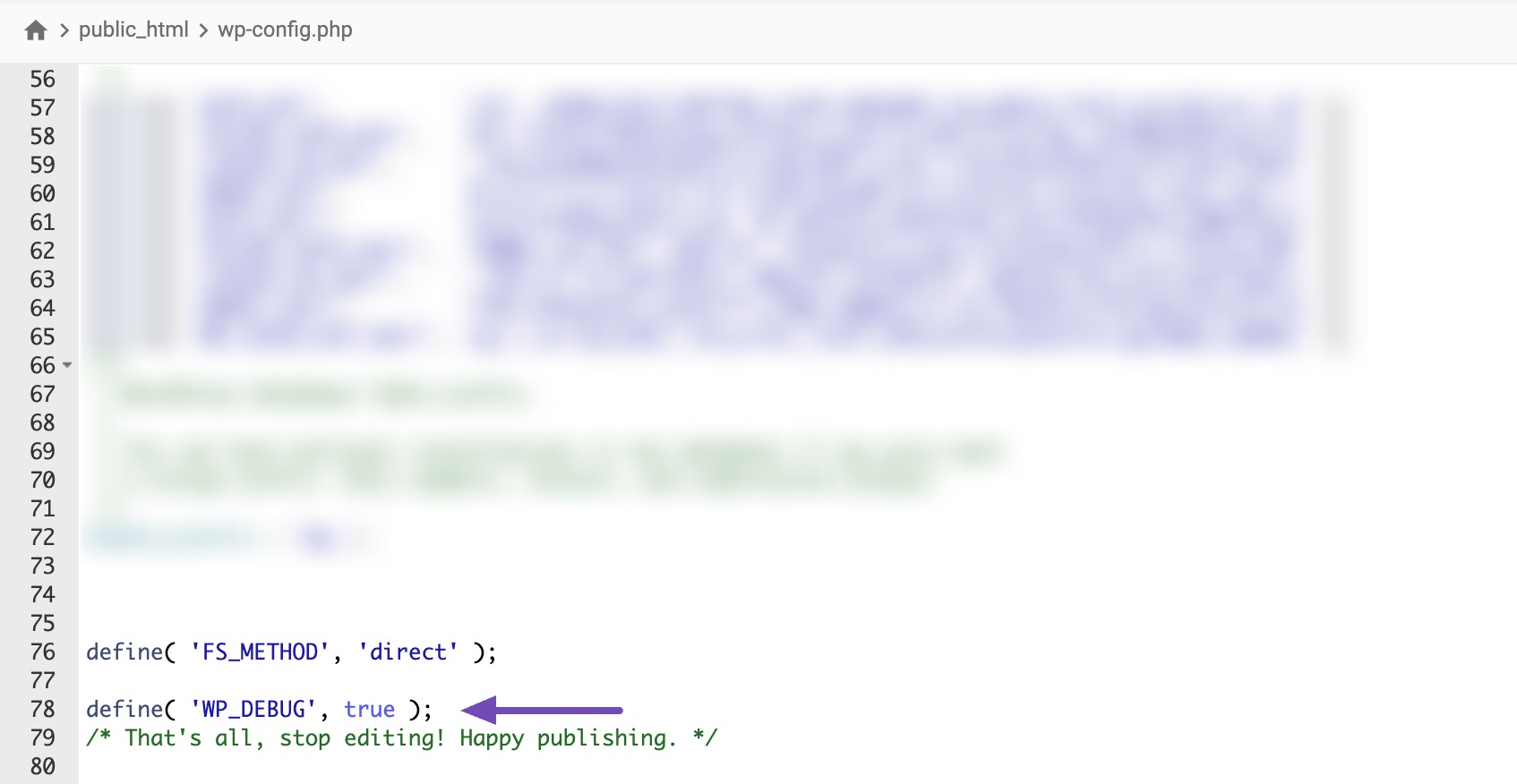
If you do not see the debug code there, you should copy and paste the code below into that area.
define('WP_DEBUG', true);After saving your changes, reload your WordPress website.
You will notice that it will display the critical error again and provide you with details about the error affecting your website.
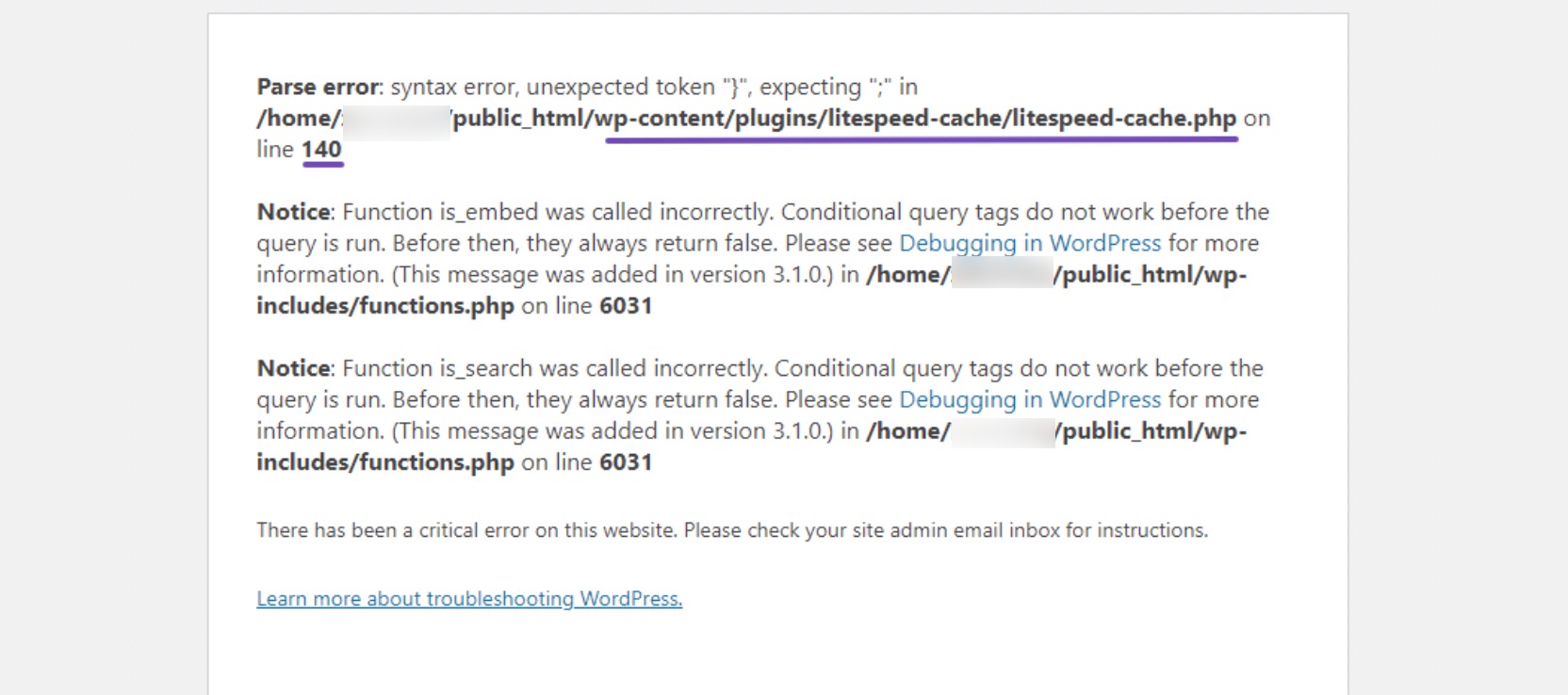
Take a careful look at the error displayed in the image above, particularly the first line. This is where you will find the main information about the error.
The line in the file where the error occurred is also provided for your convenience. We will be resolving the error from that location.
3.2 Editing the Code
I’ll use the location specified in the image above to resolve the issue. The location is /home/sitefolder/public_html/wp-content/plugins/litespeed-cache/litespeed-cache.php on line 140.
However, it’s possible that the error may be related to themes instead of plugins, depending on the provided Parse error.
It’s essential to follow the directions provided by the Parse error. In the example error provided, the error message identifies a particular plugin as the source of the issue.
To connect to your site using FTP or the hosting panel and navigate to the public_html page, select wp-content, then choose plugins, as shown below.
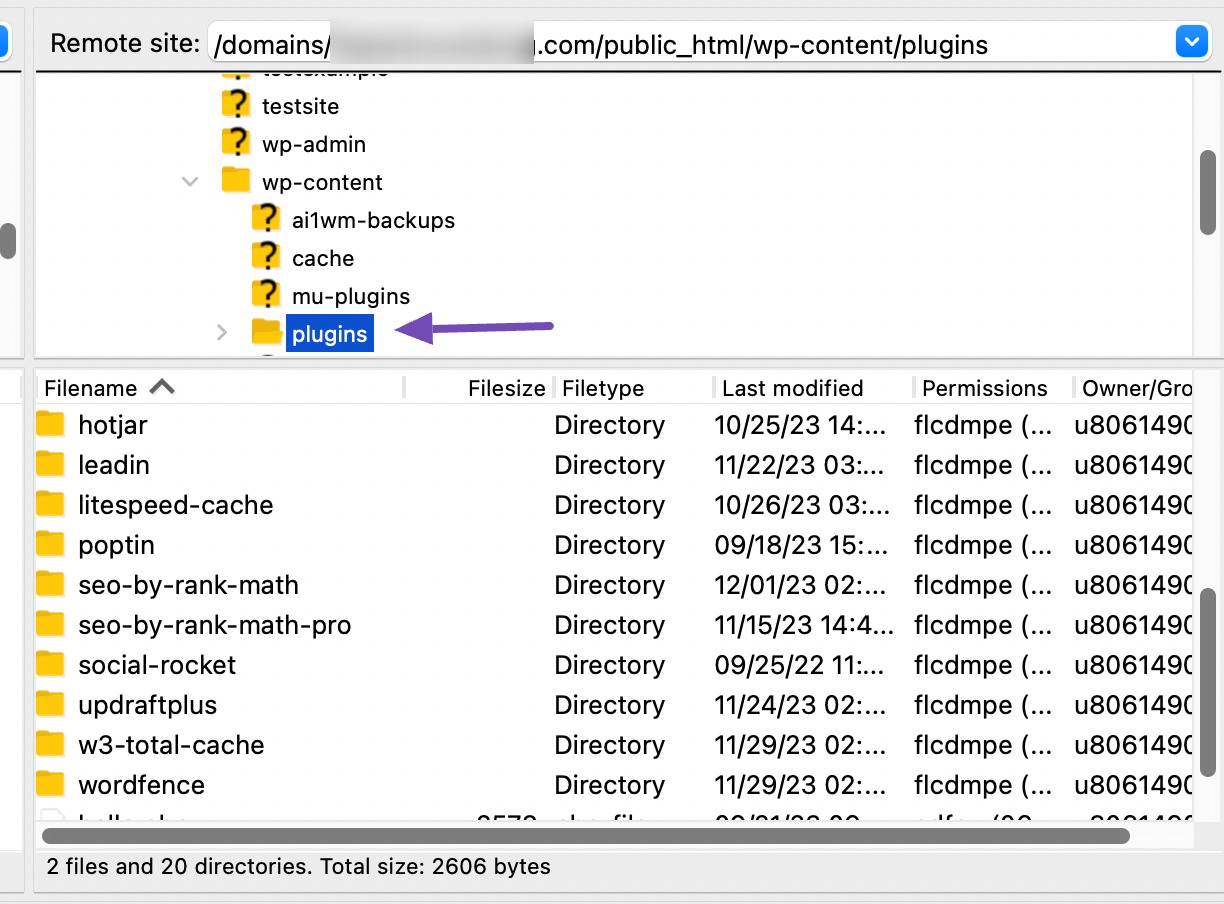
Make sure to select the indicated plugin by the Parse error.
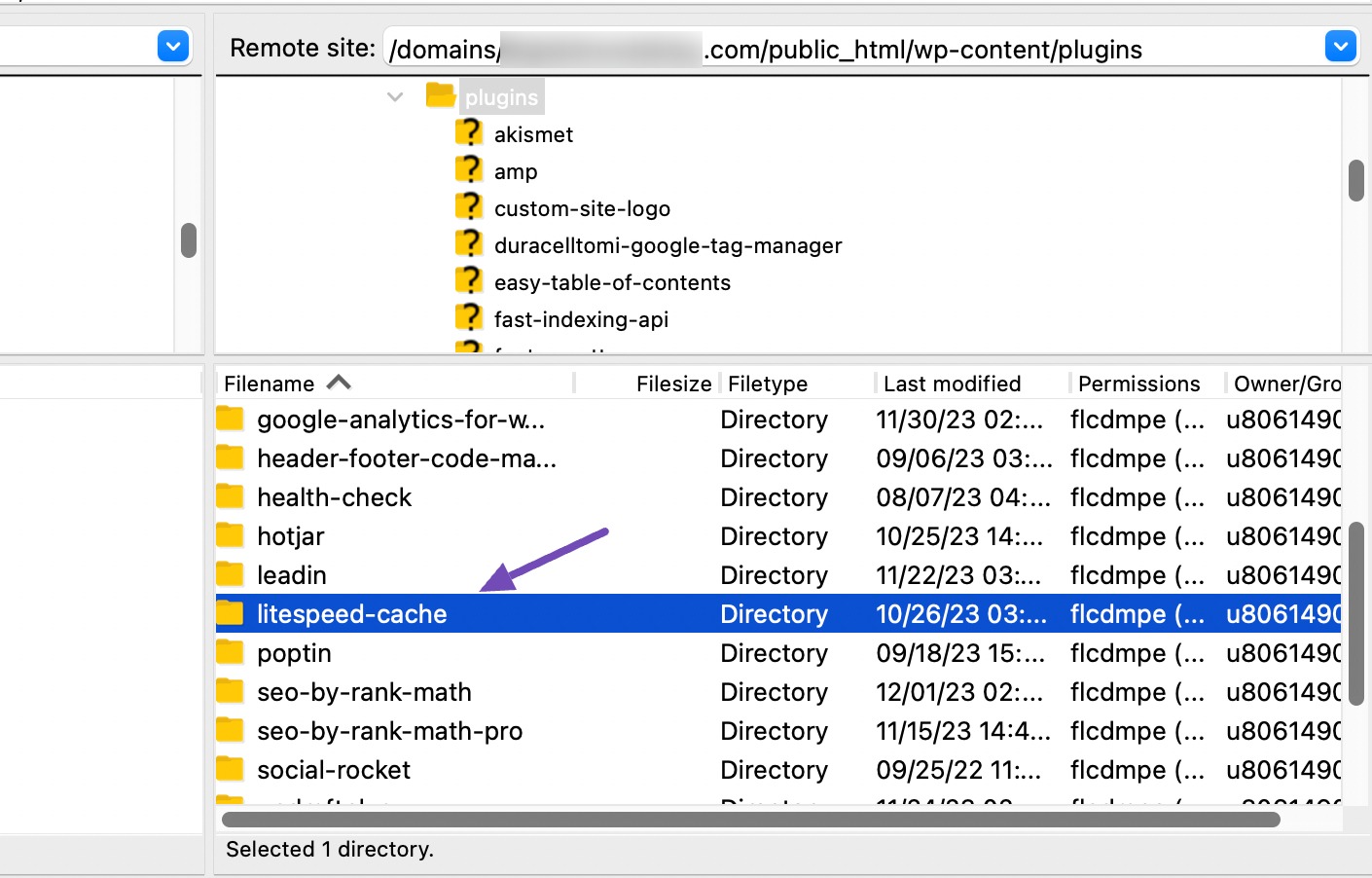
If you choose the plugin or theme, it will redirect you to the location of the file related to the plugin or theme.
To download the plugin file, right-click on it and click on Download, and after it’s downloaded, select Edit.
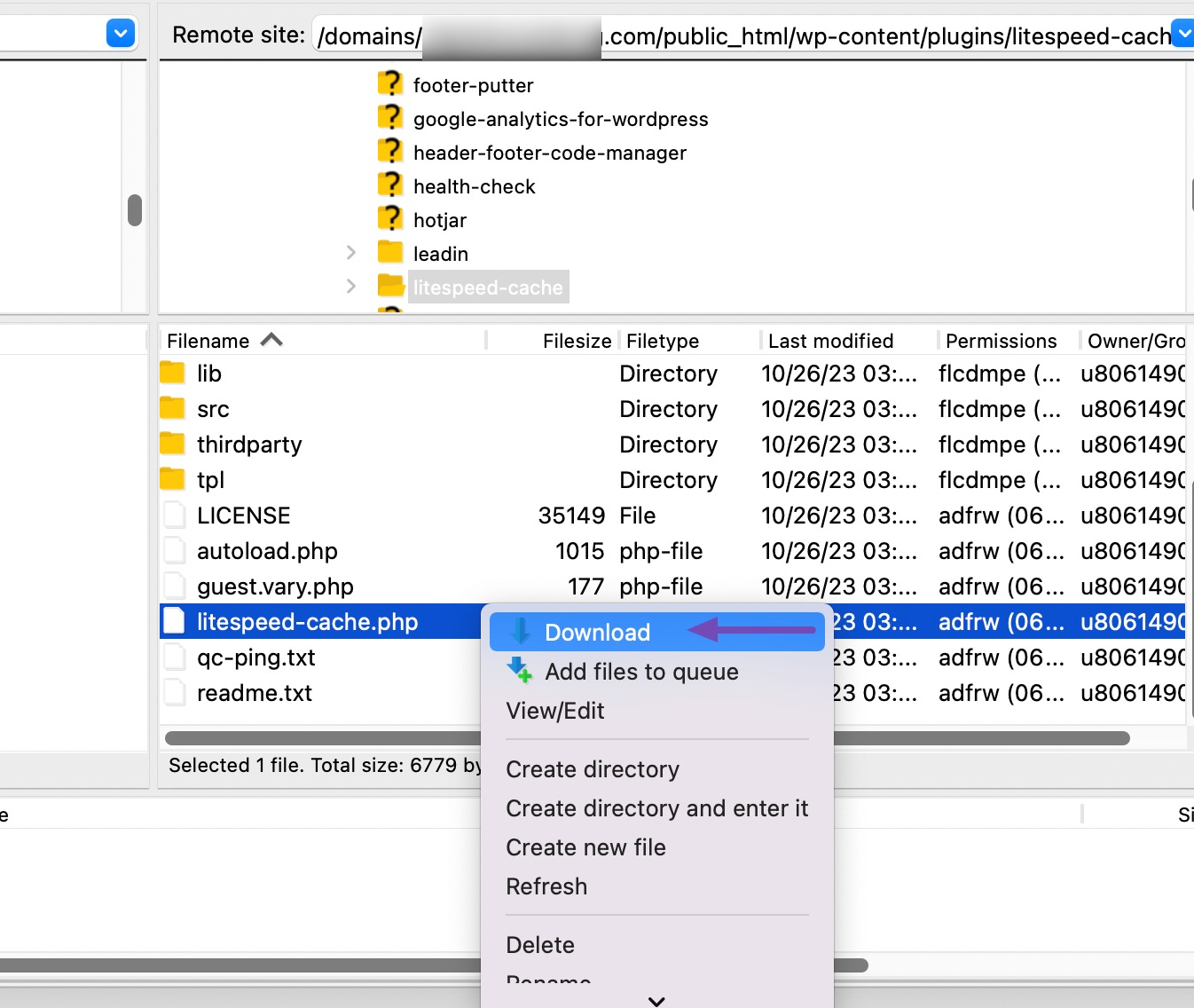
Keeping a backup of the plugin file is essential to prevent making mistakes directly on the file code and also allows for separate code editing using a dedicated code editor.
After clicking on Edit, you will need to find the specific line indicated by the Parse error.
In our example, it specifies “line 140”. Therefore, you should scroll down to line 140 to identify and address the error.

In the image above, notice a red times icon next to line 140. Hover over it to see the message “Syntax error, unexpected ‘}’, expecting ‘;’.”
After checking, you’ll notice that the error message states expecting ‘;.’
To resolve the error, add the semicolon after the “true)” string in the correct location.
To resolve it, add the semicolon in the correct spot after “true)” and click the Save Changes button.

So, after you’ve saved the changes, return to your WordPress website and reload the page.
You will notice that your page will start to load correctly.
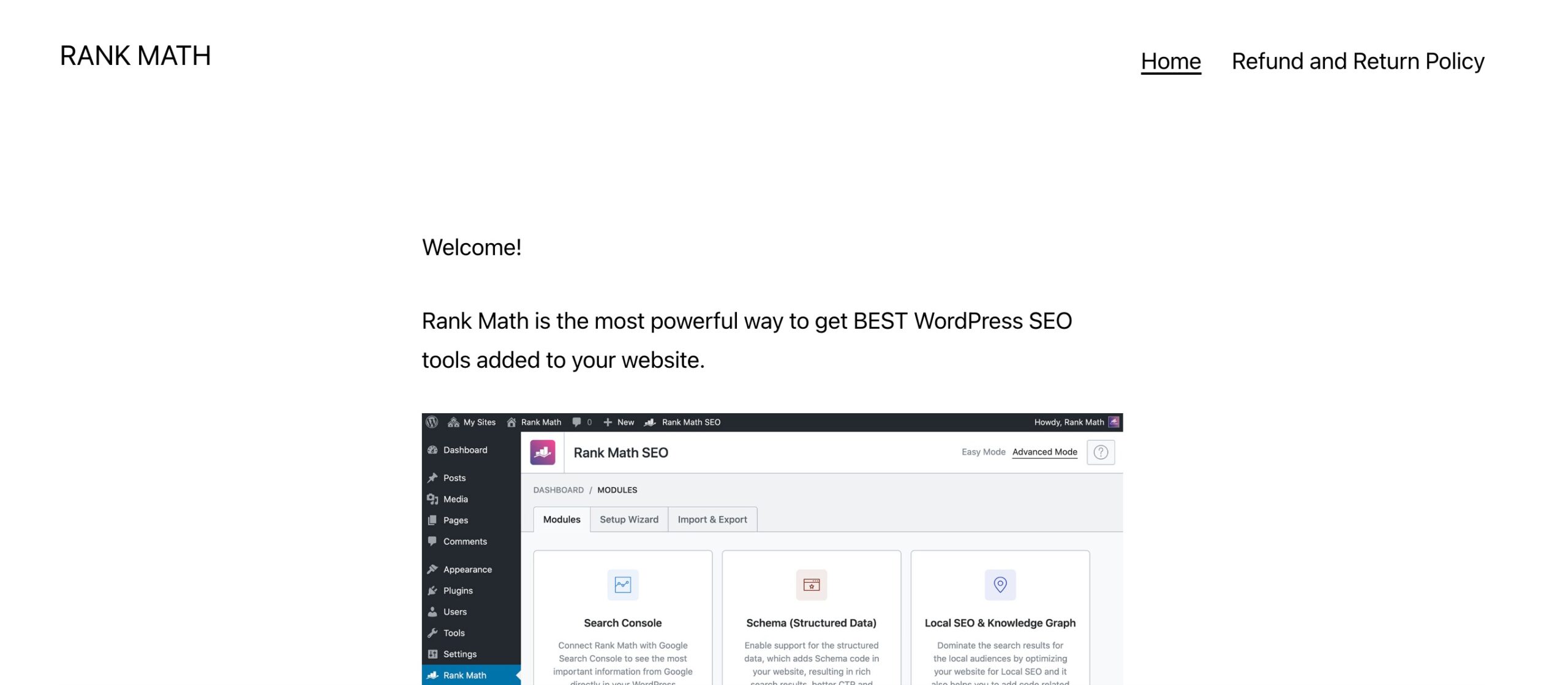
So, once the error is fixed, your website page loads properly. Please return to your wp-config.php file and change the true to false setting, or copy and paste this code, as shown below.
define('WP_DEBUG', false);
Changing this WP_DEBUG to false is vital because it can help prevent the exposure of sensitive information on your website, which can lead to security risks. It may also slow down the performance of your website.
If this feels overwhelming or you’re not confident editing code, don’t worry. In the next section, I’ll show you an alternative method that doesn’t require any coding knowledge.
3.3 Deactivating Plugins and Themes
You should only use this method if the earlier fixes didn’t work, or if you can’t apply them. Before trying it, I recommend enabling debug mode (explained earlier) so you can see exactly which plugin or theme is causing the error.
If you can still access your WordPress dashboard, you should deactivate your plugins one by one to determine which one is causing the problem.
However, if you are locked out of your WordPress dashboard and cannot access the Plugins section, you must deactivate the detected plugin or theme from your File Manager.
So, while you are still on your File Manager, navigate to the public_html → wp-content → plugins section, as shown below.
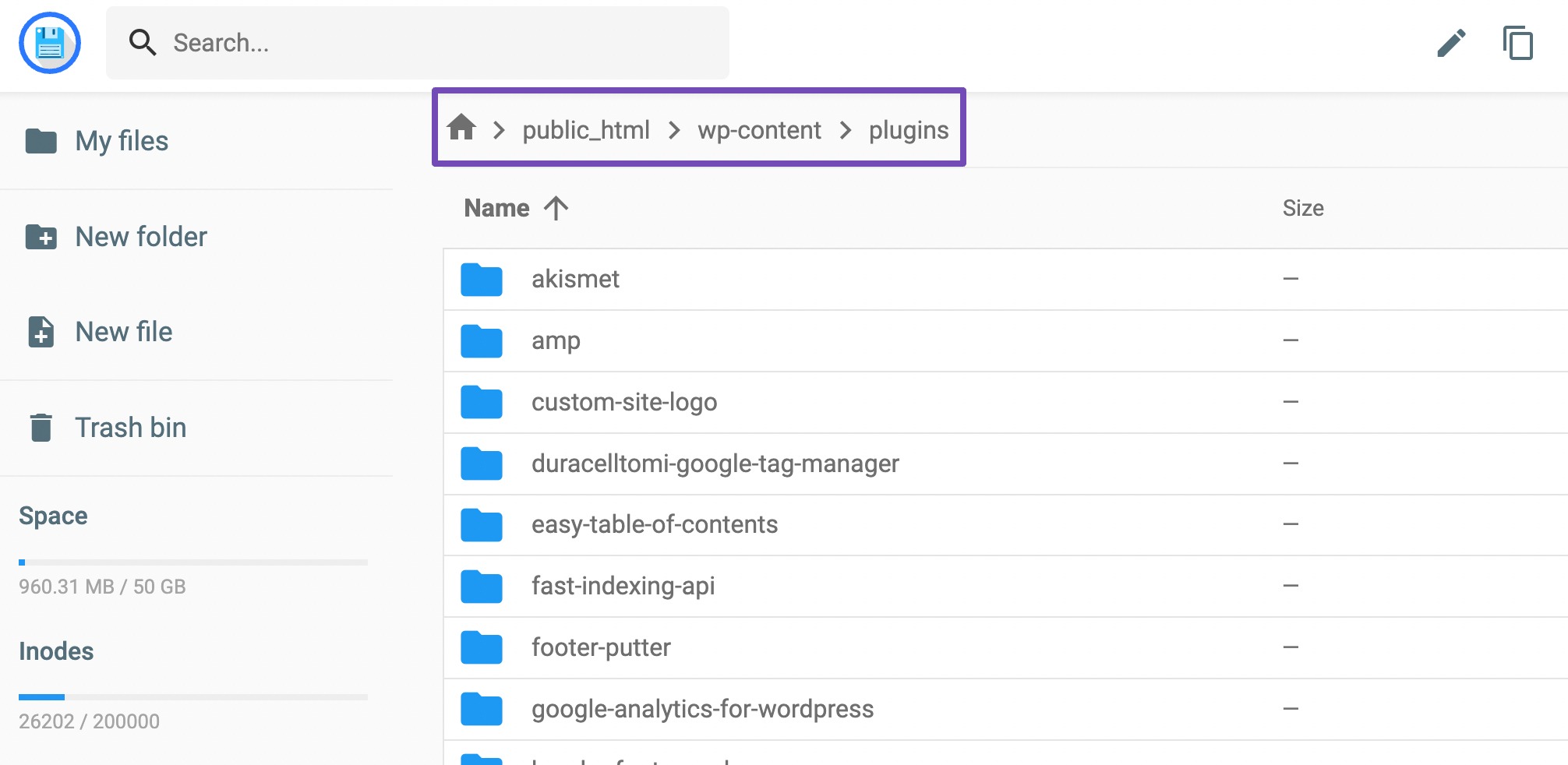
If the error shows that a theme is causing the problem, you can only select the themes option below the plugins option.
We’ll stick with the plugins option, but you can refer to our guide on deactivating WordPress themes to deactivate the themes on your site.
So, from the plugins page, you’ll have to scroll down to find the plugin mentioned in the Parse error causing the issue.
When you see the plugin, right-click it and click on the Rename option, as shown below.
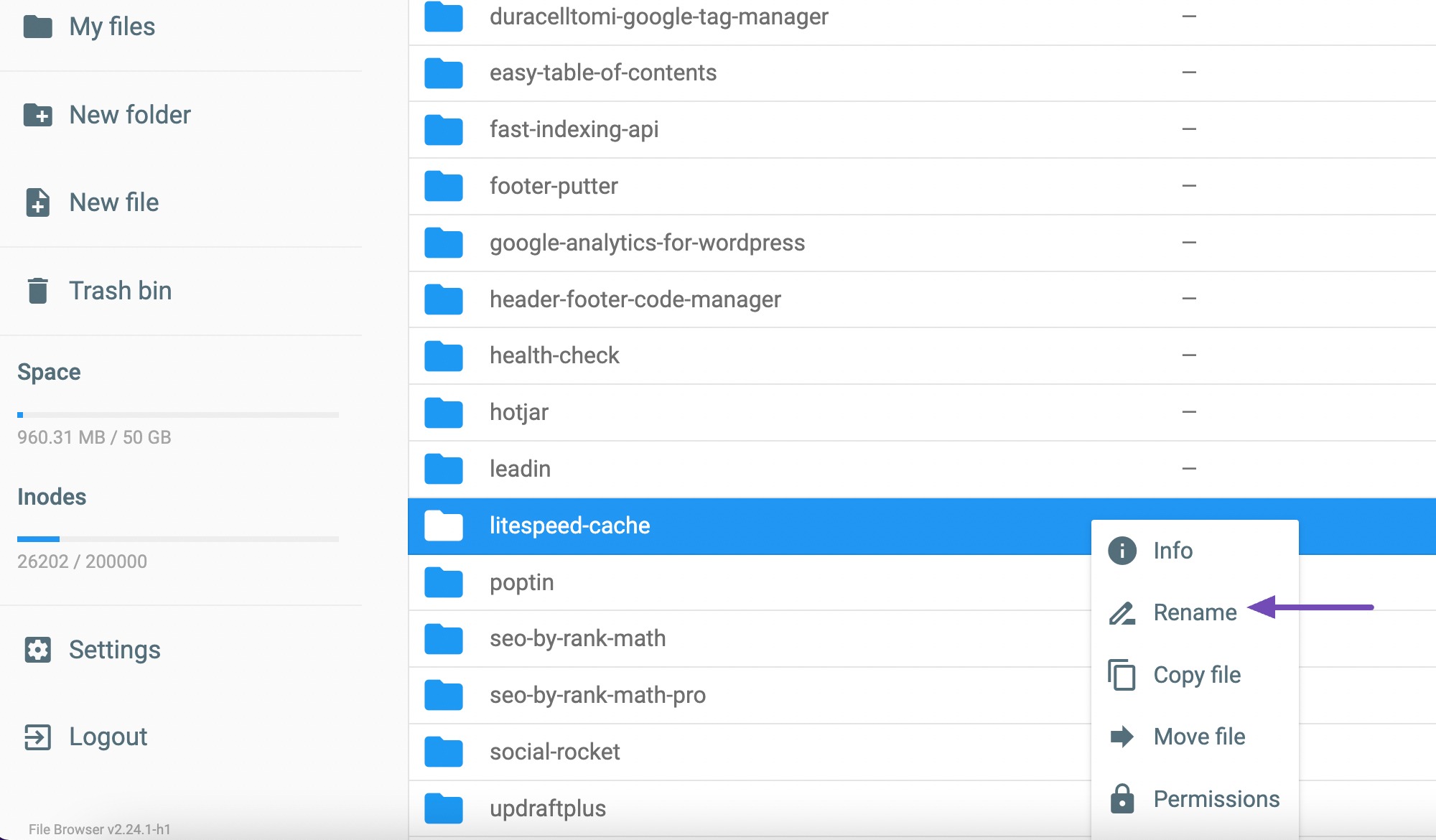
You’ll now be asked to enter a new file name. You can add “-old” to the plugin’s name, as shown below.
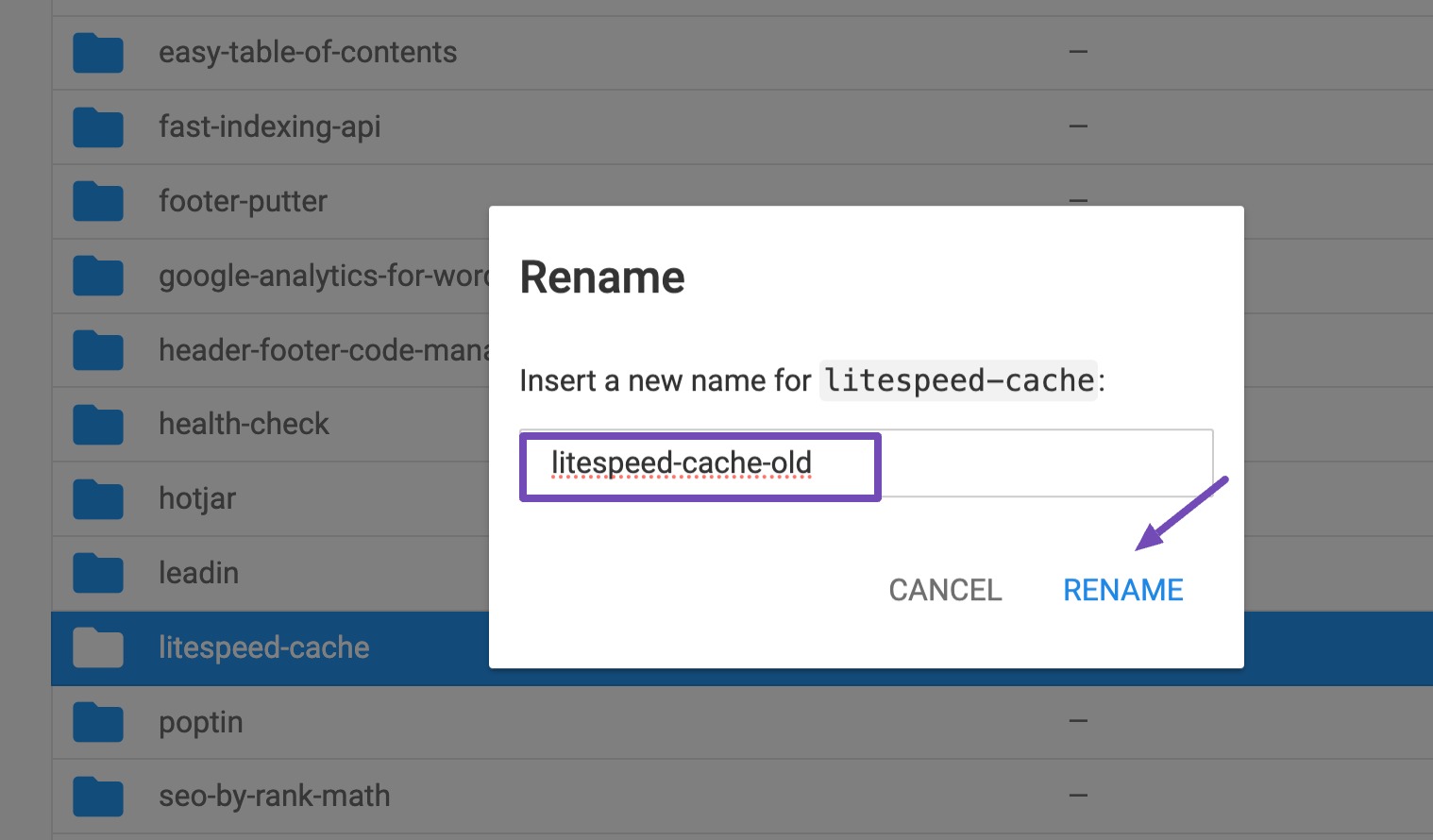
Once done, click the RENAME button.
Now, return to your website and refresh the page. You will notice that your website will start functioning properly.
4 Tips for Preventing Parse Errors in WordPress
The best way to deal with a Parse Error is to prevent it from happening in the first place. Here are a few simple tips to prevent parse errors:
- Keep your plugins and themes updated – Updates often fix bugs and ensure compatibility with the latest version of WordPress. Skipping them can leave you with code conflicts or broken features.
- Only install plugins from trusted sources – Stick to the official WordPress repository or reputable developers to avoid poorly written or incompatible code.
- Test code changes in a staging site first – A staging environment lets you spot and fix problems before they ever reach your live site.
- Use code checkers (linters and validators) – These tools scan your code for syntax errors and highlight issues before they cause problems.
- Back up your site regularly – If something goes wrong, you can restore your site in minutes instead of starting from scratch.
By building these habits into your workflow, you’ll greatly reduce your chances of running into the dreaded “Parse Error: Syntax Error, Unexpected.” But if one does slip through, don’t worry, the troubleshooting steps we’ve covered will help you fix it quickly.
5 Conclusion
Dealing with a “Parse Error: Syntax Error, Unexpected” in WordPress can feel intimidating at first, especially if it locks you out of your site. But as you’ve seen, the cause is usually something small and fixable, whether it’s a missing semicolon, an unclosed bracket, or a faulty plugin.
By following the steps covered in this post, you can get your site back online and keep it running smoothly.
Remember, even if you’re not comfortable editing code, there are safer alternatives like restoring from a backup or getting help from a developer. The key is to stay calm, work through the problem methodically, and put preventive practices in place so you’re less likely to face this issue again.
Now that you know how to fix and avoid parse errors, you’ll be ready to tackle them with confidence if they ever show up in the future.
If so, please let us know by tweeting @rankmathseo.
